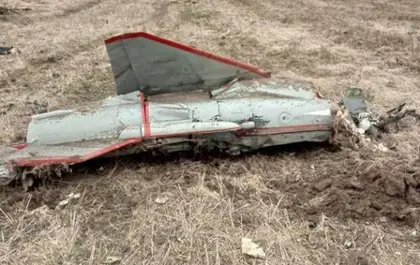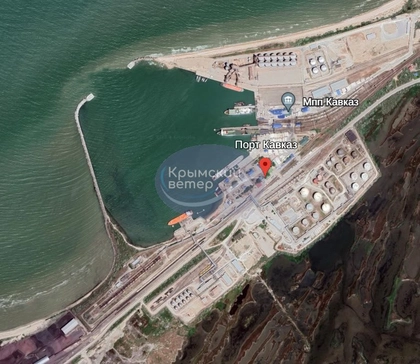Forbes reported that March 16 posts on social media showed the wreckage of a Tupolev Tu-143 unmanned reconnaissance drone that was shot down near Bryansk, Russia, at around the same time as other drones had struck oil refineries in the Samara and Krasnodar regions.
Forbes drew the conclusion that a lack of ammunition had forced Kyiv to drag yet more old Soviet weaponry from storage to attack Russian targets. The Russian state news agency TASS also reported that Moscow’s air defenses had shot down two similarly aged Tu-141 drones in the Bryansk region on Sunday, March 17.
JOIN US ON TELEGRAM
Follow our coverage of the war on the @Kyivpost_official.
It was not clear whether the same types of drones had been used in the successful strikes on Russian oil facilities, as other types of drone that seemed to have been shot down at the same time also appeared on social media.
Much has been made in recent times of the efforts by Ukraine to build on the battlefield success of unmanned aerial vehicles (UAV), drones, by developing longer range versions that could take the war to Russia’s infrastructure. The re-appearance of the old Tupolev models is more likely to be a “horses for courses” decision rather than desperation on the part of Ukraine.
The Tu-143 and its big brother the Tu-141 were originally designed as reconnaissance drones, fitted with electronic surveillance equipment and cameras, and later modified to act as aerial target drones. Compared with most of the modern fixed wing, long-range kamikaze drones used by Ukraine, these are monsters.

Anti-Kremlin Militia’s ‘Baba Yaga’ Drones Destroy Russian Observation Post in Belgorod
The Tu141 is powered by a KR-17A turbojet that provides a speed of around 1,000 km/h (620 mph) and a range of around 1,000 kilometers (600+ miles). The UAV is big, 14.33 meters (47 feet) long with a 3.88 meter (12.6 feet) wingspan and weighs in at over 6 tons. Removal of the surveillance gear from the payload compartment would allow the drone to be fitted with a large explosive charge, as much as 300-500 kilograms (600-1,000 pounds).
The Tu-143, while much smaller, could still outperform many newer drones. With a launch weight of 1.2 tons, 8 meters (26 feet) long with a 2.24 meters (7 feet) wingspan, its turbojet engine gives it a range of 200 kilometers (125 miles) and a speed of around 950 km/h (590 mph) and could carry a payload of more than 100 kilograms (220 pounds).
The Tu-141/143 were designed and built at the Kharkiv State Aircraft Manufacturing Company and came into service in the early 1970s. The factory built around 150 of each, which were taken out of service around 1989. Many of the UAVs were held in storage in Ukraine both during Soviet times and after the fall of the USSR.
Some were used as reconnaissance drones following Russia’s 2014 partial invasion, at least two being shot down over eastern Ukraine by Russian-backed separatists. They reappeared again after the 2022 full-scale invasion with more than a dozen used as attack drones in the first year of the war until stocks of more modern Western weapons began to arrive.
Despite their age and relative simplicity, they seem to remain effective. As with many older and basic weapons held by Ukraine (and it has to be said Russia, too) the attitude seems to be “if we’ve got them and they work, why not use them?”
You can also highlight the text and press Ctrl + Enter






